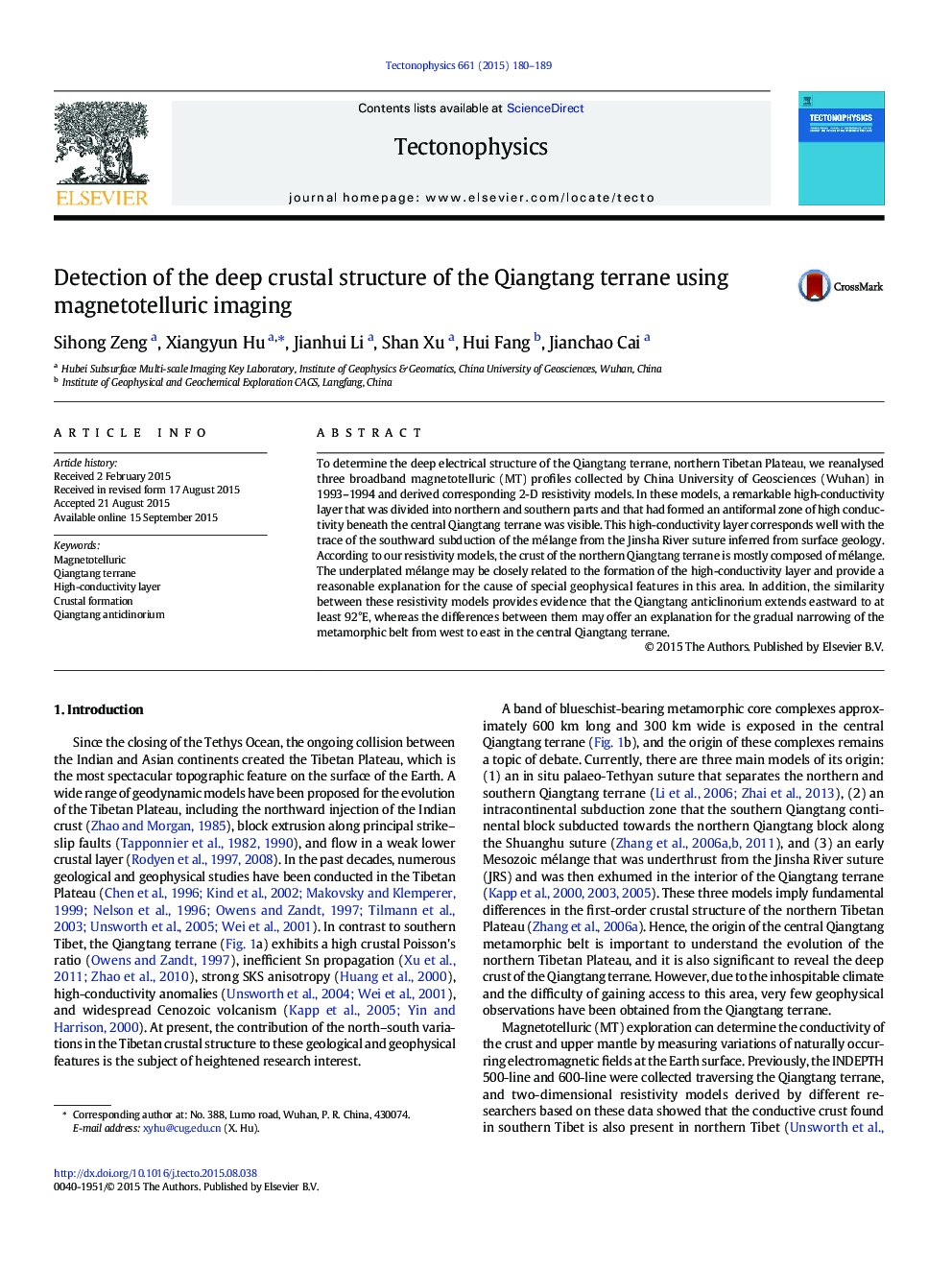| Article ID | Journal | Published Year | Pages | File Type |
|---|---|---|---|---|
| 4691515 | Tectonophysics | 2015 | 10 Pages |
•A remarkable high-conductivity layer with special shape was visible beneath the Qiangtang terrane.•Most of the crystalline basement of the central and northern Qiangtang terrane has been tectonically removed.•The Qiangtang anticlinorium plunges eastward at depth to at least 92°E.
To determine the deep electrical structure of the Qiangtang terrane, northern Tibetan Plateau, we reanalysed three broadband magnetotelluric (MT) profiles collected by China University of Geosciences (Wuhan) in 1993–1994 and derived corresponding 2-D resistivity models. In these models, a remarkable high-conductivity layer that was divided into northern and southern parts and that had formed an antiformal zone of high conductivity beneath the central Qiangtang terrane was visible. This high-conductivity layer corresponds well with the trace of the southward subduction of the mélange from the Jinsha River suture inferred from surface geology. According to our resistivity models, the crust of the northern Qiangtang terrane is mostly composed of mélange. The underplated mélange may be closely related to the formation of the high-conductivity layer and provide a reasonable explanation for the cause of special geophysical features in this area. In addition, the similarity between these resistivity models provides evidence that the Qiangtang anticlinorium extends eastward to at least 92°E, whereas the differences between them may offer an explanation for the gradual narrowing of the metamorphic belt from west to east in the central Qiangtang terrane.
Graphical abstractA high-conductivity layer, which was divided into northern and southern parts and formed an antiformal zone of high conductivity beneath the central Qiangtang terrane, was supposed to be related to the palaeotectonic track of the southward subduction of the mélange from the JRS. A large part of the crust of the Qiangtang terrane has been tectonically removed and replaced by the subducted mélange. The weak mélange may act as a tectonic weak zone for the upwelling of the mantle-derived magma, and then initial the partial melting in the mid-to-lower crust and explain the special geophysical and geological features observed in this area.Figure optionsDownload full-size imageDownload as PowerPoint slide
